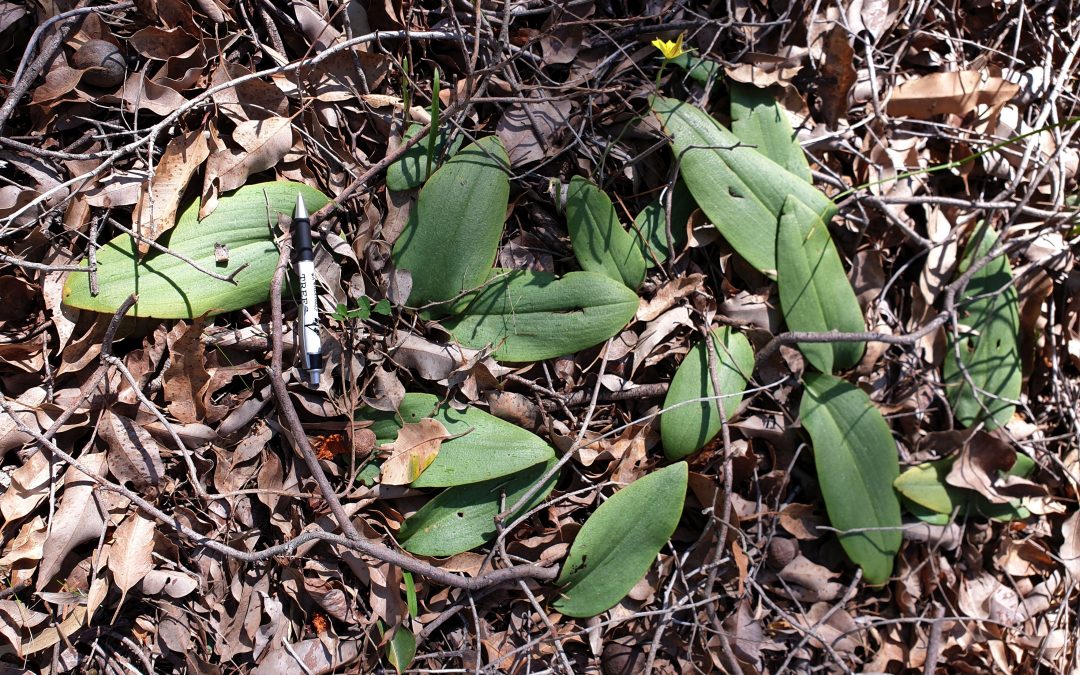
The work of an environmental officer in the Peel-Yalgorup wetlands often involves things like weed eradication and feral animal control while battling mosquitoes and kangaroo ticks, and isn’t always especially enjoyable. But every so often, there are rewards!
Wildflowers are providing some unforgettable rewards this year after good rains, but lately it’s the orchids that are attracting extra attention. These special plants are particularly vulnerable to disturbance, and are reminders of why we must stay vigilant with our management of weeds and other threats.
The orchid family is well represented around the Ramsar 482 Peel-Yalgorup wetlands. Some are brightly-coloured and well known while others have tiny flowers that are hard to find and often overlooked. Orchids are incredibly diverse and grow in a variety of habitats. Different species flower in most months of the year but Djilba (winter – spring) is prime time in our region, and this year has been exceptional!
Orchids germinate from dust-like seed that develops into a tuber, which usually divides in later years to create daughter tubers and new plants. Tubers are dug up and eaten by various animals including feral pigs. For many species, orchids exist year after year as nothing more than a single leaf or rosette of small leaves emerging from the tuber and growing flat on the ground (Main Photo) before drying and shrivelling up at the end of season. It’s common to see dozens of orchid leaves together at the height of flowering season without a single flower. This is often because they are reliant on fire to trigger flowering, but even in the absence of fire, most species will flower sporadically. The leaves give clues about the identity of the species and orchid enthusiasts are often very skilled at identifying species from the leaves alone. A tip here is to check the underside of the leaves – for example, Cowslip Orchid leaves have a deep maroon tinge.
Winter-flowering orchid species include the donkey orchids. There many species of donkey orchids, and even though almost all have brown and yellow flowers, they show a surprising diversity. The Common Donkey Orchid (Diuris corymbosa) is one of the best known, and flowers through winter and spring in bushland around Mandurah and the south-west. Other local donkey orchid species include wetland species that generally flower in late spring or early summer and have smaller flowers.
Most of the greenhood orchids also flower in winter and early spring; This group includes the Jug Orchid (Pterosylis recurva), several species of bird orchid, the tiny snail orchids, and many species named as greenhood orchids like the widespread green Banded Greenhood (Pterostylis vittata). Their flowers are green and very hard to spot among the undergrowth.
Another group of winter-flowering orchids is the strange-looking, diminutive helmet orchids with their tiny helmet-shaped flowers that “sit” on flat leaves. A local species is the Western Helmet Orchid (Corybas recurva) which has total flower and stem height of just 12 to 14 mm. Despite having deep red flowers, they can be hard to locate as they grow in dense swampy thickets around our wetlands. They are difficult to identify without flowers as their leaves are very similar to those of Midge Orchids (Cyrtostylis huegelii), which often grow alongside them and vastly outnumber them. However Midge Orchidsflower in Djilba (winter – spring), usually later than helmet orchids. Their delicate flowers are borne on stems typically around 20 to 25 cm tall. They have been flowering profusely in damp forest and wetland areas near Mandurah.
Both the Pink Fairy Orchid (Caladenia latifolia) and the yellow-flowered Cowslip Orchid (Caladenia flava) also flower in winter and spring. Both have brightly coloured flowers and have been particularly noticeable in local bushland this year. Technically speaking, they are specialised spider orchids with broad, brightly coloured petals and sepals. They are more resilient to disturbance and weeds than most orchids, and it’s not unusual to see stands of either species growing among dense grass and weeds. Other “typical” spider orchids are well recognised by their long trailing petals and sepals and paler colours including white, pale yellow, and pale pink, but some species sport colours like blood red, deep pink and bright green in their flowers. In the Peel-Yalgorup, spider orchids are easiest to find in early to mid spring in woodlands and forests but a few are wetland specialists and typically flower later than their forest relatives.
Rabbit Orchids (Leptoceras menziesii) also flower in spring and have been flowering prolifically this year. Their delicate pink and white flowers with little “rabbit ears” are unmistakable. Well-shaded bushland under Tuarts, Peppermints or Marri trees is a good place to look for them. Some of the most difficult orchids to spot are the mignonette orchids –their slender stems and tiny green flowers seem to disappear into the surrounding vegetation. Flowers are typically only about 2 mm across and are barely recognisable as orchid flowers. They are clustered densely on flower spikes. The Tall Mignonette (Microtis media) is one of the more common local species and grows in local wetlands and in bushland. Its flower spikes are up to 40 cm tall, and like many of the mignonette orchids, it flowers in spring or early summer.
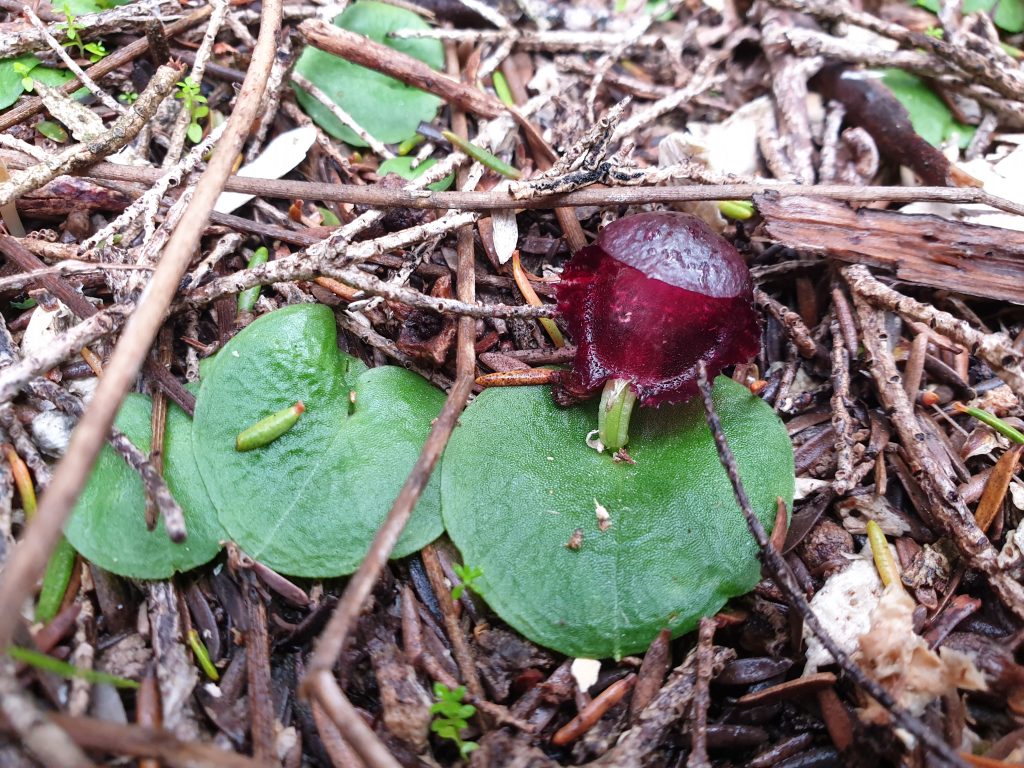
Western Helmet Orchid 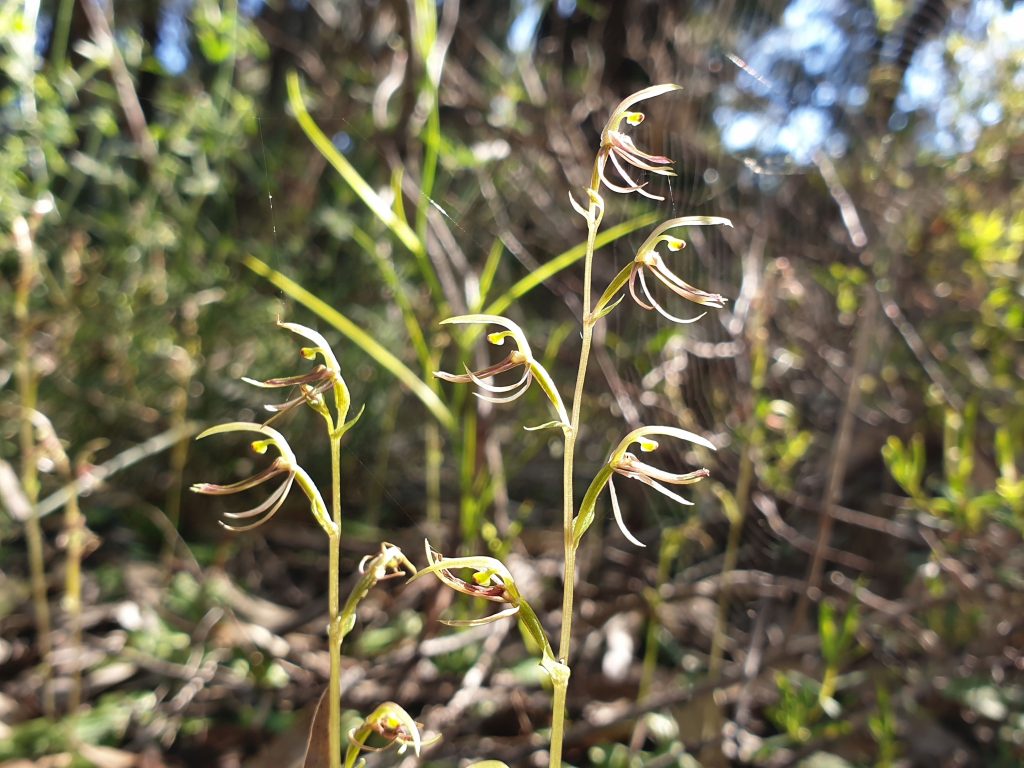
Midge Orchids 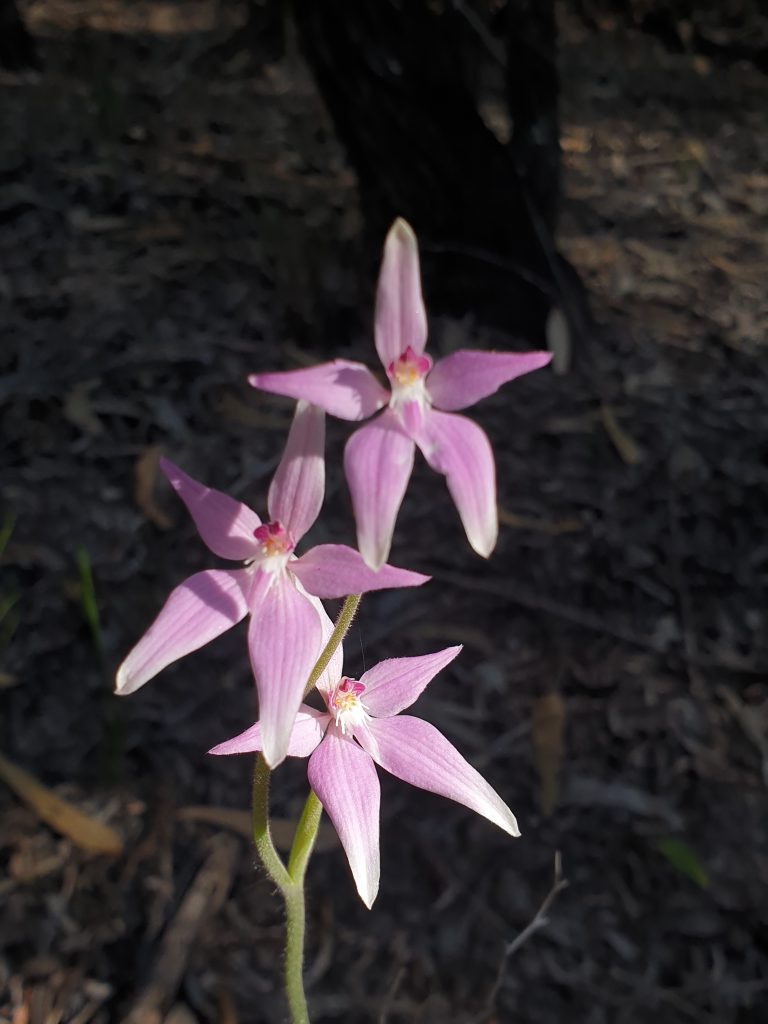
Pink Fairy Orchid 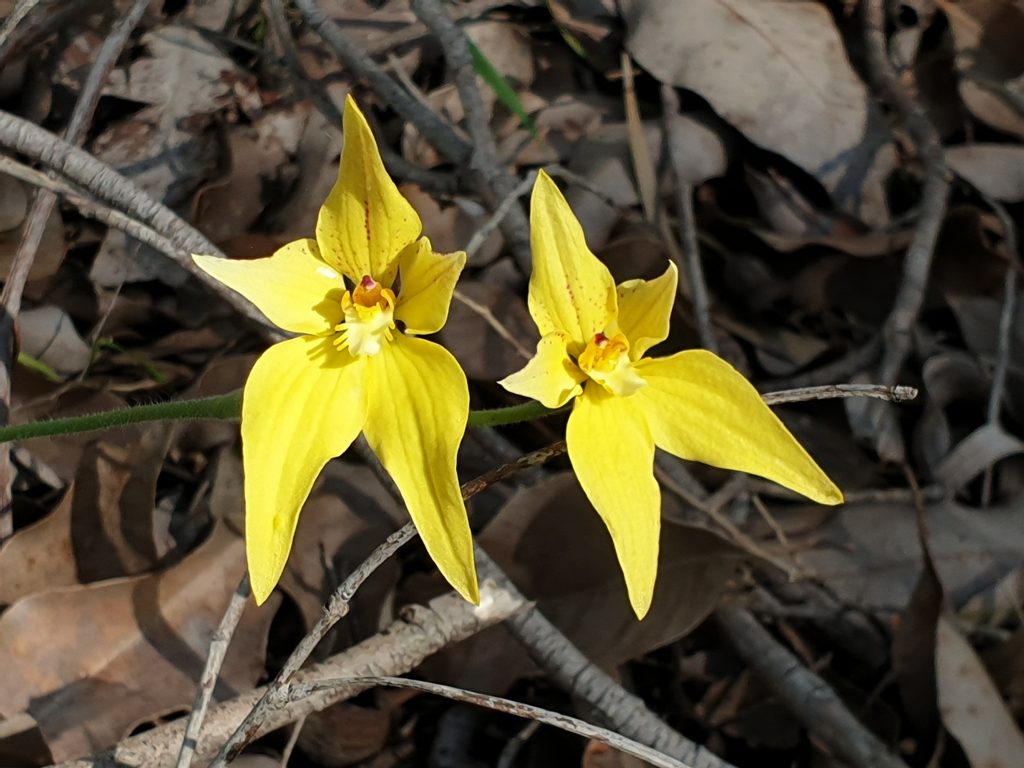
Cowslip Orchid 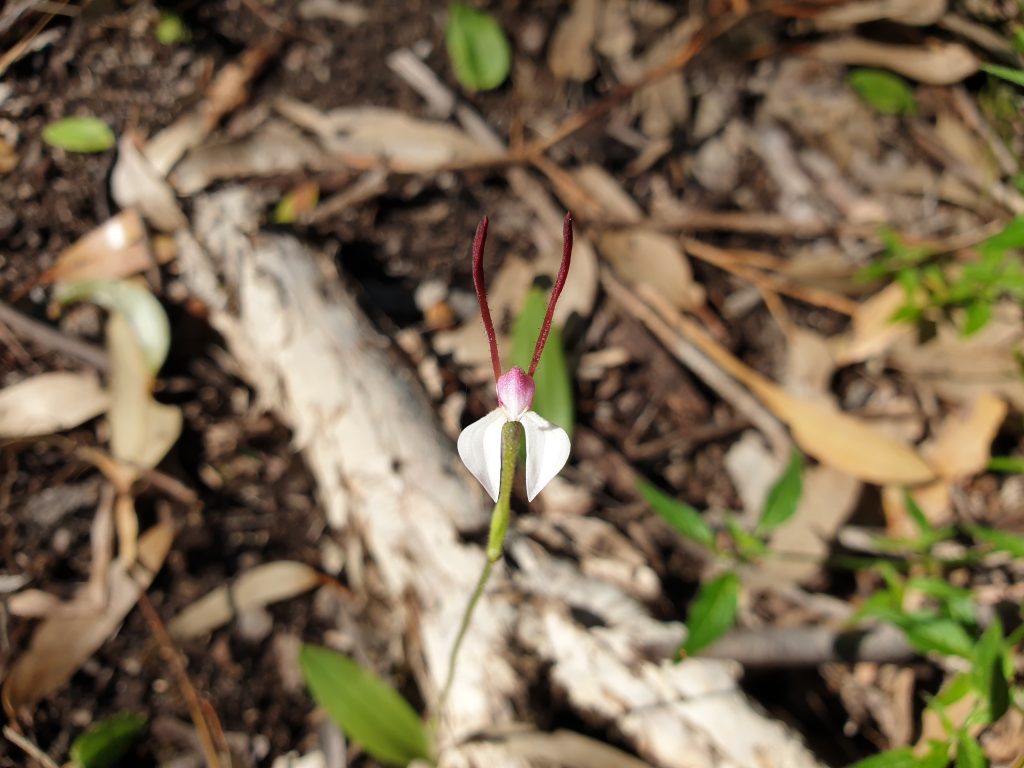
Rabbit Orchid 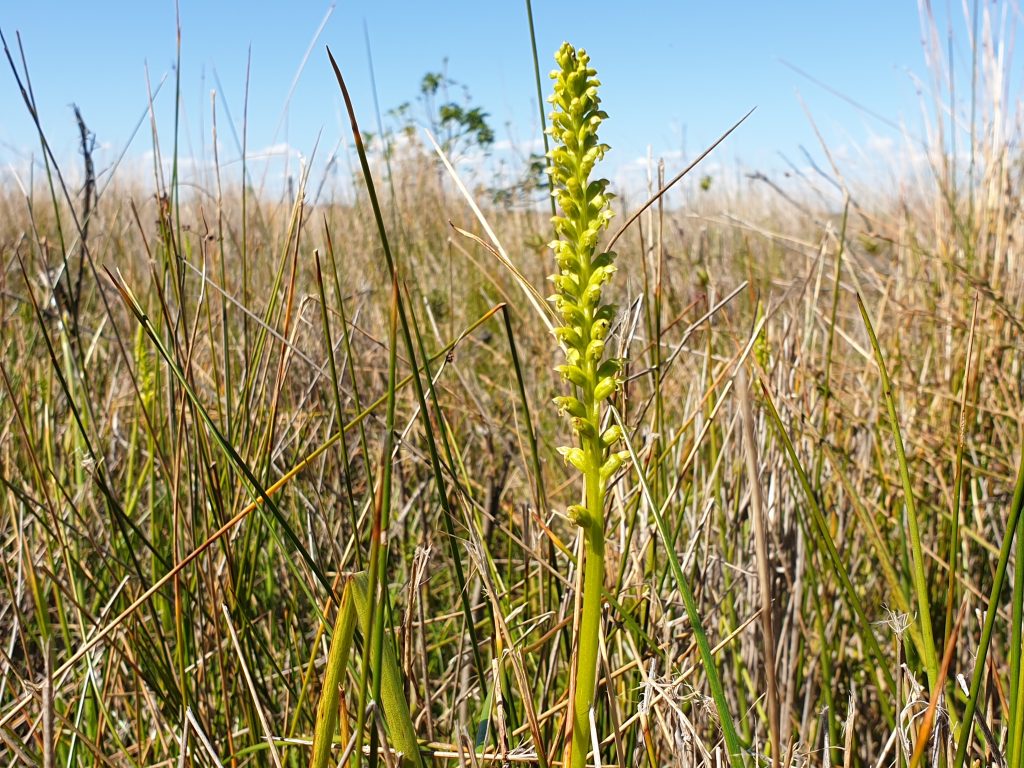
Tall Mignonette Orchid
There are many other species of orchid in Peel-Yalgorup wetlands that flower throughout Djilba (winter to early spring), and many more in Kambarang (mid to late spring) and throughout the year. Their diversity is truly stunning, and all contribute to the richness of the wetlands. Most species are sensitive to change and have little tolerance to disturbance and weed incursions. Small, delicate native plants like the orchids are among the first things to disappear after prolonged disturbance from things like illegal vehicle access and feral animals and the impacts of weeds and Phytophthora dieback disease. Managing these threats is crucial to the health of the unique wetlands and surrounding bushland and to the long-term survival of the fascinating and beautiful orchids.
The Wetlands and People project is funded by the Australian Government’s National Landcare Program
